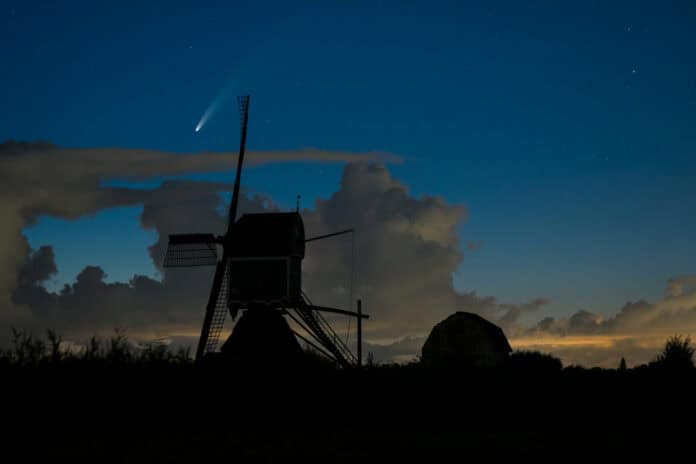For the first time since the Stone Age, you’ll be treated to the sight of the Tsuchinshan-ATLAS comet speeding its way across the Dutch night sky! ☄️
According to NASA’s Earth Observatory, the comet made its closest transit past the Sun on September 27 — for the first time in 80,000 years.
If you’re ready and raring to catch a glimpse of this ancient visitor, you’ll be glad to know that the comet will still be visible in the Northern Hemisphere over the next few days.
What’s the best place to spot the comet?
Speaking to RTL Nieuws, meteorologist Magdel Erasmus advises would-be comet-spotters to get out of the city.
The best viewing locations include open fields, beaches, dunes, and hills — provided they’re sufficiently far away from light pollution.
Comet C/2023 A3 (Tsuchinshan-ATLAS) above the troposphere, half an hour time-lapse.
Beside the magnificent dust tail, ‘Anti-tail’ is also clearly perceived even by naked eye.
Welcome to the October comet season! pic.twitter.com/TNN10cCCEH— Mickey (@mickeywzx) October 13, 2024
Erasmus stresses that standing “with your back to any street lights” and looking “westwards, where the sun sets” is key to spotting the comet.
Pictures of the comet flood social media
Can’t catch a glimpse of the comet yourself? Maak je geen zorgen (don’t worry), because eagle-eyed stargazers from as far north as Leeuwarden and as far south as Nijmegen have already captured some stunning footage. 👇
Cold evening but I got it.
Comet C/2023 A3 (Tsuchinshan–ATLAS) above Leeuwarden, The Netherlands#CometATLAS #Tsuchinshan #CometC2023A3 #Netherlands pic.twitter.com/AUOJqGMdky— Maurice Dutchee (@Dutchee9) October 14, 2024
#Komeet C/2023 A3 (Tsuchinshan-ATLAS) #TuchinshanATLAS 20.07 METZ from Nijmegen #lentseplas Netherlands #Astrophotography #comet pic.twitter.com/kRw1tjM3Th— Maarten bouwman (@Maarten_Bouwman) October 14, 2024
Are you hoping to spot our latest celestial visitor? Shoot us your thoughts in the comments below!


